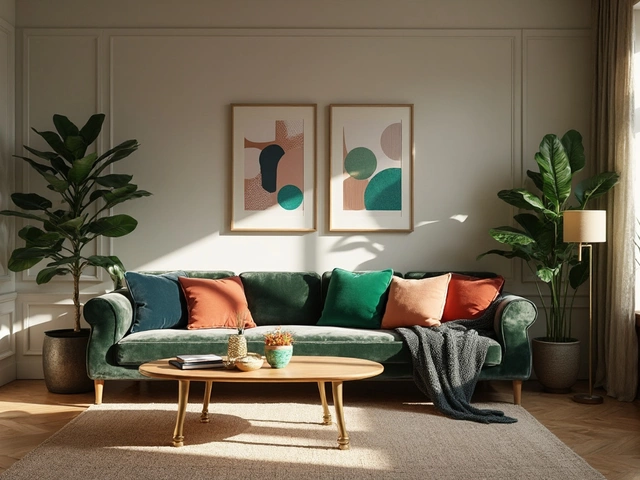Sofa Quality – What to Look for Before You Buy
When you sit on a sofa, you want it to feel solid, stay comfy for years, and not cost more than it should. The secret is knowing which parts really matter. A strong frame, good cushion fill, and the right depth are the three pillars of quality.
First, check the frame. Look for hardwoods like oak, beech, or ash. These woods resist warping and can hold up to daily use. If the frame is made of soft pine or cheap particleboard, expect it to creak or break sooner.
Second, examine the joints. The best sofas use dowels, screws, and corner blocks – not just glue. A quick push on the arms or seat should feel tight, not wobbly. If you hear squeaks, that’s a red flag.
Cushion Fill and Comfort
Comfort comes from the cushion fill. High‑density foam gives firm support, while low‑density foam feels soft but wears out fast. Many quality sofas combine a firm foam core with a softer feather or down layer for a plush feel. Test the seat by sitting for a few minutes – you should feel supported without sinking too deep.
Seat depth also plays a big role. A depth of 22‑24 inches works for most people; deeper seats are great for lounging but can be uncomfortable for shorter folks. If you’re unsure, measure the distance from the backrest to the edge of the seat and compare it to your leg length.
Upholstery and Longevity
The fabric or leather you choose affects both look and life span. Natural fibers like cotton and linen breathe well but may stain quickly. Synthetic fabrics such as polyester or microfiber repel spills and are easy to clean. Leather adds a classic touch and ages nicely, but it needs regular conditioning.
Check the fabric’s thread count or weave tightness. A tight weave resists tearing and snagging. If you have pets or kids, opt for stain‑resistant treatments or removable covers that you can wash.
Finally, think about the sofa’s overall value. Many retailers mark up sofas by 100‑200 % over manufacturing cost. Knowing the average markup helps you negotiate a better price. Look for sales, compare similar models, and read reviews that mention durability.
To sum up, a quality sofa starts with a sturdy hardwood frame, reinforced joints, and a balanced cushion system. Choose a fabric that fits your lifestyle, check the seat depth, and be aware of typical markups. With these tips, you’ll feel confident walking into any store or browsing online, and you’ll end up with a couch that stays comfortable for years to come.

How to Spot a High-Quality Sofa
This article dives into essential tips for identifying a high-quality sofa. It discusses the importance of frame construction, cushion fillings, upholstery fabrics, and other critical factors that contribute to durability and comfort. Learn how to make informed decisions and avoid common pitfalls when shopping for your next sofa. Find insights into style, support, and craftsmanship that ensure a worthwhile investment.
Categories
- Storage (27)
- Bathroom (18)
- Sofas (15)
- Curtains (15)
- Home Decor (12)
- Bedding (11)
- Kitchenware (11)
- Cushions (11)
- Mirrors (10)
- Rugs (9)
Popular Articles



